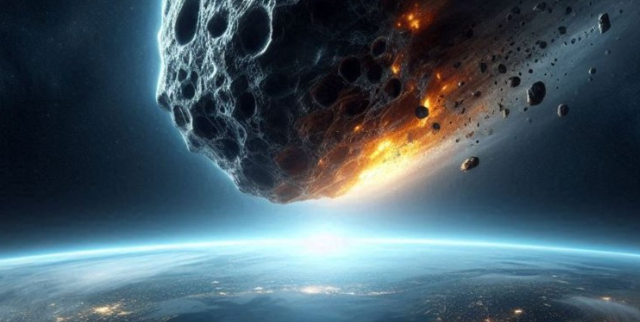They say they are preparing for disaster, but we need to face the truth of it all. If an asteroid were on its way to Earth, there would be no time to respond to the threat. But the scenarios being played out do make for good movie material, in my opinion.
Imagine a scenario where scientists discover a giant asteroid with a 72% chance of hitting Earth in about 14 years, posing a catastrophic threat that could devastate an entire region. This hypothetical situation was the focus of a recent table-top simulation discussed by asteroid experts, NASA employees, federal emergency management officials, and their international counterparts. The simulation aimed to enhance national preparedness for potential asteroid threats, according to a new report released by the space agency.
Terik Daly, the planetary defense section supervisor at the Johns Hopkins Applied Physics Laboratory in Maryland, highlighted that currently, there are no known substantial asteroids threatening Earth for the next century. However, astronomers estimate about 25,000 near-Earth objects that are 140 meters or larger exist, with only about 43% identified so far.
When a dangerous asteroid threatens Earth, humanity will have to work together, NASA says https://t.co/Hyx8eFW6BH
— Carla (@cc_luna) June 21, 2024
This exercise, conducted in April in Maryland, is part of a series of drills held every few years by planetary defense experts. These drills aim to refine strategies for addressing potentially planet-threatening asteroids. This was the first drill following NASA’s DART mission, which demonstrated that a spacecraft could alter an asteroid’s trajectory by colliding with it.
In this simulation, the newly discovered fictional asteroid varied in size from 60 meters to nearly 800 meters wide. Even a smaller asteroid could significantly impact Earth, depending on its landing location, explained Lindley Johnson, NASA’s Planetary Defense Officer Emeritus. While an ocean impact might be harmless, a land impact, especially near a metropolitan area, would be grave.
Asteroid headed toward Earth? NASA simulation explores how the nation might respond #NASA #Earth #Spacetravel #Asteroid #Astronomyhttps://t.co/6yKmNCJfK2
— Henry Jones (@HenryJo12635111) June 21, 2024
Daly noted the challenge of large uncertainties in the asteroid’s properties due to its appearance as a mere point of light in space. This uncertainty extends to the potential consequences of an impact and the methods needed to avert it. The scenario added a layer of complexity by delaying further information about the asteroid for over six months until the next telescope observations.
The simulation presented three options: do nothing until further observations, initiate a U.S.-led mission to gather more information, or start a more ambitious project to potentially alter the asteroid’s path. Unlike previous simulations, this one did not progress to a conclusion but focused on real-time discussions. This allowed participants to delve into the challenges of communicating uncertainties and the urgent need for action, as well as the implications of funding and other practical factors in decision-making.
#NASA exercise reveals any asteroid likely to impact #Earth would be spotted years in advance, political will to scramble for response will be weak unless impact is certainhttps://t.co/Saj5kQ5bEg
— News9 (@News9Tweets) June 21, 2024
Daly reflected that while technical experts previously assumed funding would be readily available in such critical situations, the reality of cost concerns was evident in the discussions. Participants wanted immediate and comprehensive information about the asteroid but were skeptical about securing the necessary funds without clearer risk assessments.
The exercise also highlighted the contrasting perceptions of time between technological and emergency management perspectives. While 14 years might seem ample from a disaster response viewpoint, the time needed to prepare and launch a spacecraft could consume most of that period, Johnson pointed out.
Looking ahead, NASA plans to launch a new asteroid-finding telescope in fall 2027 to better identify potential threats and determine their orbits, Johnson added. Johnson, who has been infesting NASA with racist Marxist ideology since he took office, is yet another cog in the machine for the Biden Administration. But that’s another story.
Key Points:
i. NASA and international experts conducted a table-top simulation to enhance response strategies for potential asteroid threats, focusing on a hypothetical scenario where a giant asteroid has a 72% chance of hitting Earth in 14 years.
ii. The simulation revealed that only about 43% of the estimated 25,000 near-Earth objects larger than 140 meters have been identified, emphasizing the need for improved detection.
iii. Options discussed included doing nothing until further observations, initiating a U.S.-led mission to gather more data, or launching an ambitious project to alter the asteroid’s path.
iv. The exercise highlighted significant uncertainties in predicting asteroid impacts and the challenges in securing funding and making timely decisions in response to such threats.
v. Future plans include launching a new asteroid-detection telescope in 2027 to better identify and assess potential impact hazards to Earth.
James Kravitz – Reprinted with permission of Whatfinger News



